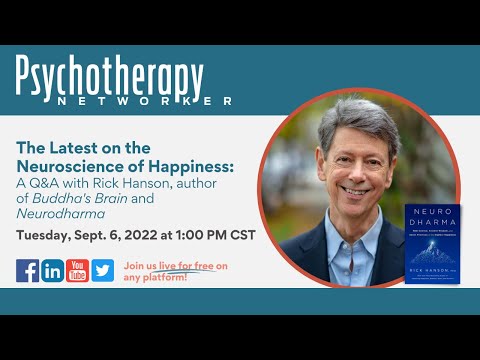Q: When working with trauma, I want to help my clients have a deep, holistic sense of healing. What are some simple somatic techniques I can incorporate into my sessions?
A: If you’re considering integrating holistic practices into your treatment protocol, you already understand the importance of the mind–body connection when it comes to healing trauma. The good news is you don’t need another degree or subspecialty to bring a somatic perspective into your work. All you need is a road map.
Holistic practices have a long history of being underused—and dare I say, undervalued—in our field. Unfortunately, some mental health professionals don’t even consider the practice of somatics, or body-centered therapies, to have a place in traditional psychotherapy spaces. But as the world has moved to embrace the theory of how trauma is captured in the body, more and more clinicians are opening up to them.
During a three-year holistic mental health clinical fellowship, I learned a valuable lesson about nurturing clients toward wellness in an integrated way: when we attend only to the mind, the body may continue to hold and manifest psychological and emotional pain.
Orienting the Client
According to the American Psychological Association, about 70 percent of primary care visits are driven by psychological distress, including anxiety, panic, depression, and stress. Such was the case with my client Milagros, who was referred to me because she was experiencing physical symptoms that had resulted in seven emergency room visits in just one month. She’d feel so much tightness in her chest that she thought she was about to have a heart attack. The emergency room staff found no biological causes for her symptoms, but that was because the root of her symptoms was a traumatic event, a car accident she’d been in the year before. Although it hadn’t resulted in any sustained physical injury, her mind kept replaying the event, teleporting her back to the past and causing her to feel debilitating panic. Like her, many clients aren’t aware of the ways their body deceives them in these moments. So how do we get them to understand their body’s response to stress?
Any therapeutic approach that’s going to help clients improve their awareness of how they’re metabolizing trauma must orient them for the work ahead. I often start by telling them, “We’ll be working together in a way that will be different from traditional talk therapy. We’ll talk, yes, but we’ll also resource your body so it can feel safe while you process your difficult experiences. This can look like me guiding you through a sound-bath meditation or a journaling practice. How does that sound?”
If they give me a positive response, I ask that we transition to a separate area of my office, where I have meditation cushions and sound bowls. As we settle into this space, I ask clients to find a comfortable seat and, when ready, to lower their gaze or close their eyes to turn their focus inward. Then, we usually do a breath practice for a few minutes so they can get centered. If you don’t wish to create a designated space for holistic practices, that’s okay. The important thing is you create a gentle segue into the somatic practice by helping clients attune to their breath and body. From there, you can move into whatever structured holistic work you and your clients have agreed on.
Somatic Journaling
Many forms of writing therapy have been known to reduce anxiety, maladaptive rumination, and some symptoms of PTSD. One of those forms, somatic journaling, is a simple practice that can help clients map body sensations in the present moment to develop greater awareness of how they respond to certain environments and emotions—meaning they gain metacognition (awareness of thoughts) and interoception (bodily attunement). Both are critical to healing, since trauma can damage our awareness of our mind and body.
In this journaling practice, the therapist acts as a guide, offering prompts. I usually start by saying something like, “Where in your body do you feel sensations that stand out when you think about the event?” This offers clients a neutral place, from where they can get curious about the ways their body responds to the present moment. “There’s no judgment here,” I always add, “only mindful attention to what your body is telling you.”
“I’m noticing some tension in my neck and shoulders,” Milagros told me.
“That’s a healthy observation and a good place to start,” I responded. “Why don’t you write that down.”
She jotted something in her notebook and said, “It’s good to get that out.” Putting her pen down, she closed her eyes, searching inward. “I feel a familiar discomfort in my stomach,” she added.
“Let’s write that down, too,” I advised. “Then, if you can, let’s stay with that feeling a little longer.”
Eventually, Milagros started to write in her somatic journal each night at home, noting what her body had been feeling that day and what was happening in her life and environment at the time.
“When I think about the accident and how I could’ve avoided it,” Milagros told me one day, “I start to feel guilty.”
“And what does that guilt feel like?” I asked.
“My stomach is churning. I get nauseous just thinking about it.”
Milagros was beginning to develop a better understanding of the thoughts, emotions, and related bodily sensations that we’d go on to work with. Her somatic journal helped me understand what needed recalibrating—and how to determine what holistic intervention we’d use next.
Sound Healing
The sound bowls I display in my office often spark conversations about how they can be used in sessions. Sound medicine predates modern medicine by centuries, and its benefits are recognized by modern science. Tibetan quartz singing bowls, for example, emit sounds at frequencies that can lessen tension, anger, fatigue, and depressed mood.
Outside of therapy, most sound baths don’t incorporate words; they simply use the calming, focusing effect of the sounds emitted. But since I use sound baths to help clients deepen their awareness of their emotions, I layer sound medicine with talk therapy, often by starting and ending each session with a sound bath. I offer this to clients with caution, though, because the potency of the sounds can create a rapid deepening in the client’s felt sense, which can cause flooding.
When Milagros expressed interest in trying a sound bath as a way to allow us to move even deeper into her somatic awareness, I picked up a bowl and struck its rim. “Take in the experience of the sound,” I said. “How does it feel to be immersed in it? Where do you feel it most? What sensations are coming up as you mindfully attune to your body in this moment?” These questions help clients orient to how the sound is impacting them, centering on the body and its wisdom.
Tears began to form in Milagros’s eyes. “I can feel the discomfort in my stomach, neck, and lower back,” she said. “I’m becoming more aware of it, even though it feels like it’s been here for ages.”
“These are old wounds,” I told her. “They run deep. Let’s take 10 deep breaths together to help you release some of this tension.”
“I’ve got this heavy feeling,” she told me afterward. “It feels heavy to hold these emotions all at once. It’s like the weight of my sorrow is being carried in my body.”
“This is valuable insight,” I told her, “and I really appreciate you sharing this with me. In the coming weeks, we can talk more about this feeling to process it.”
We’d learned that the feeling of a heavy weight and exhaustion were the body-centered clues that indicated Milagros’s trauma memories were overtaking her. Now, she could use this awareness to lessen the impact of those sensations when they arose. Moving forward, we integrated deep belly breaths into our sound-bathing sessions, which not only eased the heaviness and exhaustion, but engaged Milagros’s stomach to help lessen the churning feeling she’d described earlier, connected to her feelings of guilt.
Guided Rocking
Vestibular movement, or rocking, is a proprioceptive movement—meaning it increases awareness of your body—that has been known to foster a sense of safety. Clients who’ve experienced a traumatic incident that threatened their sense of bodily safety often have a disoriented sense of security, and their bodies often behave as if there’s another threat around the corner. Because of this, I’ll sometimes integrate rocking into talk therapy, giving clients permission to sway back and forth instead of sitting still while talking about their experiences.
With Milagros, I suggested something specific: “Sway your body from side to side—four seconds to the left, and four to the right. As you sway left, inhale for four seconds, and then sway right and exhale for another four.” We swayed 10 times before I asked Milagros to bring her breath back to its normal rhythm, while still swaying. Once I noticed her body finding its rhythm, I asked, gently, “What’s coming up for you?”
“Urgency,” she replied.
“What feels urgent?” I asked.
“My need to feel better and get back to life,” she said. “I don’t want to carry this load anymore.”
“It must hurt,” I affirmed, leaving a few moments for the tears to flow down her cheeks before offering another prompt. “Can we breathe into what you’re feeling?” Milagros nodded, and we resumed swaying, breathing four seconds in and four seconds out.
After a few minutes, she began to slow down. “Okay,” she said, signaling that she was ready to begin processing what had come up.
Humming and the Vagus Nerve
Milagros’s nervous system had kicked into overdrive since her accident, so it made sense that we’d continue to engage it with the goal of training it to rest and recover. Humming is a great way to stimulate our ventral vagus nerve, the part of the nervous system that can calm the threat response.
I practiced humming with Milagros so she could do it at home to soothe herself. “Hum for about five seconds, in a low tone, as if you had a really deep voice,” I instructed. “Then breathe in, and hum again.” Milagros and I cycled through this process five more times before checking in with her body.
“I feel the vibration hitting the back of my throat,” she said. “It’s weird, but I feel a lot better!”
Like Milagros, many of my clients respond to humming with a mixture of relief and surprise—relief because they feel much calmer, and surprise because they can’t believe they had this tool all along.

Somatic work is slow work, but it honors the cadence the body needs to feel relief. Some clients, particularly those with extensive trauma histories and intergenerational trauma, may need a year of somatic work alongside talk therapy before their symptom relief sticks. Milagros, it turned out, only needed six months before she felt safer in her body.
Most therapists never learn about somatic interventions in graduate school or training programs, even though we now have a wealth of evidence pointing to how effective they can be in helping us carve a path toward healing. What might the field of trauma treatment look like if more clinicians recognized the value of somatic interventions? In my own work, and in my life, I’ve discovered that when the body feels relief, the mind experiences release.
Get a free download from Mariel’s book here.
Photo by Photo by Monstera Production/Pexels
Mariel Buqué
Mariel Buqué, PhD, is a trauma-trained psychologist and author of the book Break the Cycle: A Guide to Healing Intergenerational Trauma. She received her doctorate in counseling psychology from Columbia University, where she trained as a fellow in holistic mental health. Visit her website at drmarielbuque.com.













